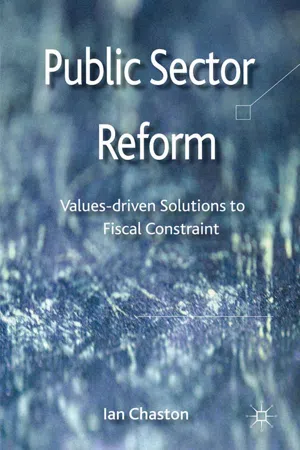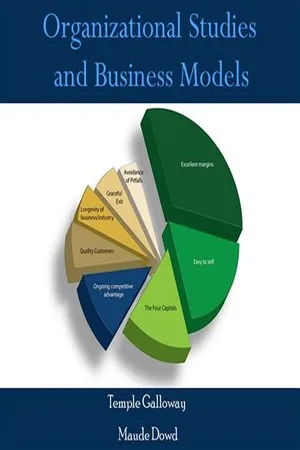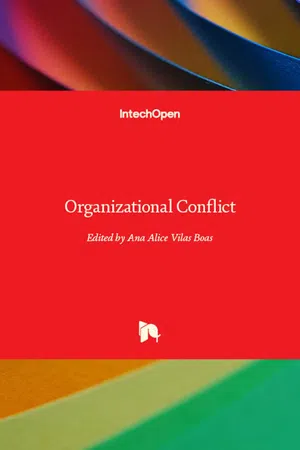Business
Organizational Values
Organizational values are the guiding principles and beliefs that shape the culture and behavior within a company. They reflect the core priorities and ethics of the organization, influencing decision-making, employee conduct, and interactions with stakeholders. By defining what is important to the company, organizational values help align employees and drive the overall direction of the business.
Written by Perlego with AI-assistance
Related key terms
1 of 5
9 Key excerpts on "Organizational Values"
- eBook - PDF
Cross Cultural Competence
A Field Guide for Developing Global Leaders and Managers
- Simon L. Dolan, Kristine Marin Kawamura(Authors)
- 2015(Publication Date)
- Emerald Group Publishing Limited(Publisher)
Members then analyze the organizational culture by identifying its core values — Knowing and Aligning Cultural Values 187 both values that are present and those that are absent. Finally, they discuss the level to which the values are shared by organizational members and ascertain the extent to which they are congruent with the personal values of the individuals in the organization. The MBV methodology enables organizational members to measure the corporate core values around all three axes (economic-pragmatic, ethical-social, and emotional-developmental). It also provides an analysis of the extent of congruency and incongruency between the organization ’ s members and its dominant culture: the larger the gap, the greater the need for cultural reengineering. Are Ethical-Social Values Means or Ends in Themselves? Because ethical-social values are lived values — those that people put into action and use to guide their behavior — we feel it is important to talk about the role they play in doing just that. Ethical-social values may be either final or instrumental in nature. By final, we mean they are absolute or terminal values; they are ends in themselves, the desired states that we seek to achieve. By instrumental, we mean they guide the forms of behavior needed to achieve our ends: honesty, money, and positive thinking may be necessary in order to secure a particular final value, such as happiness. There are two types of final values: personal and ethical-social ( Dolan et al., 2006 ). • Personal values are those that the individual aspires to for him-or herself. They are the response to the question, “ What are the most important things in your life? ” People may answer such things as happiness, health, friend-ship, success, prestige, family, material goods, work, life, and more. - eBook - PDF
- George R. Goethals, Georgia J. Sorenson, James MacGregor Burns, George R. Goethals, Georgia J. Sorenson, James MacGregor Burns(Authors)
- 2004(Publication Date)
- SAGE Publications, Inc(Publisher)
If the CEO remains morally passive, the entire organizational culture can become dishonest by default. Maintaining core moral values requires an active, hands-on approach. Company Values The other type of values that organizations need can be called company-specific values. These might include what the company views as its core business (for example, high technology) or its core strategic strengths (for example, customer service, low cost, speed, innovation, or quality). Unlike moral values, which should never change, company values can properly change with changing business conditions. Having low cost as a company value might not make sense at one time (for example, at the beginning of the personal computer industry), but it might come to make sense later as price competition heats up. Core company values must evolve to match chang-ing business conditions. But still these values—and value changes—need to be driven from the top. Company values by themselves do not necessar-ily give a company any competitive advantage. Similar sets of values may be endorsed by many companies. What will set a company apart will be how well it executes those values—that is, applies the values in the realm of everyday action. For example, having quality as a company value will not work unless the products or services are, in real-ity, high quality, and unless that quality is perceived and valued by customers. All business organizations that are to be led by a single vision, and a single set of core values must be hierarchically structured. A hierarchical structure is also necessary because people differ in their ambi-tion, knowledge, and ability. The purpose of struc-turing is to tie the parts of the organization together. - eBook - PDF
Public Sector Reformation
Values-driven Solutions to Fiscal Constraint
- Ian Chaston(Author)
- 2012(Publication Date)
- Palgrave Macmillan(Publisher)
These core values provide a sense of purpose that can inspire people throughout the organisation over a relatively long period of time. These researchers posited that, in the private sector, organisations which have created an effective vision tend to be driven more by ideology than by seeking to maximise profits. Levin (2000) noted that, although organisational values are an impor- tant foundation for the crafting of a vision, values alone do not con- stitute the entire vision. Although, to be effective, a vision needs to be congruent with an organisation’s values, vision statements should put values into the context of their application of fulfilling organisational purpose. In Levin’s opinion, a vision should be both relevant to current conditions and orientated towards the future. He also considers it to be critical that the vision is compelling, bold, aspiring and inspiring, while remaining believable and achievable. Organisational Values 141 Meyerson and Martin (1987) posited that the following critical dimensions require consideration when there is an intention to revise organisational values: (1) Values must be viewed as an integrating mechanism providing the normative glue that binds the workforce together . (2) Inconsistencies will emerge between different groups or depart- ments, reflecting the different impact which external and internal experiences have on the validation of relevant values. (3) Values constituted of differing beliefs and attitudes may create con- tradictions in employees’ minds. (4) Ambiguous values are inevitable within any organisation due to individuals agreeing with each other over some issues but disagree- ing or being indifferent over others. (5) Consensus, disagreement and confusion will occur and create obsta- cles in achieving acceptance of a common set of values across the entire organisation. - eBook - PDF
Managing by Values
A Corporate Guide to Living, Being Alive, and Making a Living in the 21st Century
- S. Dolan, S. Garcia, B. Richley(Authors)
- 2006(Publication Date)
- Palgrave Macmillan(Publisher)
Together, these three dimensions form the basis for understanding what is essential in this book: the importance of identifying core values (i.e., yours and the organizations); aligning core values with desired objectives; and illuminating your personal quest for why you want to manage by values. THE ETHICAL-SOCIAL DIMENSION: PREFERENTIAL CHOICES Values are strategic lessons learned, maintained and relatively stable over time. These lessons teach us that one way of acting is better than its oppo- site in order to achieve our desired outcome. Meaning, our values and value systems guide our behavior toward that which will turn out well for us based on these beliefs. Values form the nucleus of human liberty, to the extent that they con- stitute deliberate or preferentially strategic choices, in the medium to long term, for certain ways of behaving and against others, towards the survival or good life of a particular system. We shall look at this again when we discuss final or instrumental values. Under this concept, quality in one’s work may be chosen in preference to its opposite, the botched, improvised or rushed job. Or genuine concern for people in the company might be preferable to feelings of contempt or indifference toward them. Other examples of values could be the creation of wealth, rather than ruin, or destroying it; auton- omy, or healthy independence against unhealthy dependence; happiness 2 VALUES: BUT, WHAT ACTUALLY ARE THEY? 29 instead of sadness; honesty as opposed to fraudulent behavior; a priority for team spirit and cooperation, versus privileging individualism. Our true, or core values, are revealed through our actions rather than what we merely state as being a value. Values that are demonstrated through behavior are lived values, while espoused values are those that are expressed, either verbally or in writing, but may not be consistently enacted. - No longer available |Learn more
- (Author)
- 2014(Publication Date)
- College Publishing House(Publisher)
The values of a corporate culture influence the ethical standards within a corporation, as well as managerial behavior. Senior management may try to determine a corporate culture . They may wish to impose corporate values and standards of behavior that specifically reflect the objectives of the organization. In addition, there will also be an extant internal culture within the workforce. Work-groups within the organization have their own behavioral quirks and interactions which, to an extent, affect the whole system. Roger Harrison's four-culture typology, and adapted by Charles Handy, suggests that unlike organizational culture, ____________________ WORLD TECHNOLOGIES ____________________ corporate culture can be 'imported'. For example, computer technicians will have expertise, language and behaviors gained independently of the organization, but their presence can influence the culture of the organization as a whole. Organizational culture and corporate culture are often used interchangeably but it is a mistake to state that they are different concepts. All corporations are also organizations but not all organizations are corporations. Organizations include religious institutions, not-for-profit groups, and government agencies. There is even the Canadian Criminal Code definition of organized crime as meaning a group comprised of three or more persons which has, as one of its primary activities or purposes, the commission of serious offences which likely results in financial gain. Corporations are organizations and are also legal entities. As Schein (2009), Deal & Kennedy (2000), Kotter (1992) and many others state, organizations often have very differing cultures as well as subcultures. Organizational Culture Includes Brand culture Brand culture is a company culture in which employees live to brand values, to solve problems and make decisions internally, and deliver a branded customer experience externally. - eBook - PDF
- Mary Uhl-Bien, Ronald F. Piccolo, John R. Schermerhorn, Jr.(Authors)
- 2023(Publication Date)
- Wiley(Publisher)
It starts at the top, with ethical values clearly outlined and aligned with the strategy. Usually this is a type of value statement like a “core promise” that explains how a company will meet its mission by living its values. It then manifests throughout the organization by modeling and rewarding ethical leadership. A key to making an ethical culture work is hiring and retaining people who fit with, support, and promote core values. This is done by adding Adaptive cultures help support rapid adaptation, innovation, and organizational resilience. Ethical cultures integrate ethics into every aspect of the organization. 2.3 Organizational Culture 2-29 ethics-related questions into job interviews, instilling ethical values during onboarding, pro- viding regular and meaningful ethics training, and including ethical conduct as part of per- formance reviews. 59 It is sustained by ensuring that people feel safe to speak up and learn from failure and by promoting positive prosocial behavior, rather than cutthroat competition. Companies that live the value of “doing right and doing good” often benefit from moral and psychological flourishing, which research shows comes when people do acts of kindness for others or for the world. 60 How to Change Cultures Culture is one of the most important factors in an orga- nization’s success. This means that leaders need to protect and maintain positive and healthy cultures. In general, it is much easier to destroy a culture than build one. A single leader in a high-level position can rapidly dismantle all progress made previously by destroying trust, inciting fear, condoning negative political behavior, and focusing people on the wrong priorities. Strong cultures, those in which people share deeply held values, can hold companies back. - eBook - PDF
Corporate Social Entrepreneurship
Integrity Within
- Christine A. Hemingway(Author)
- 2013(Publication Date)
- Cambridge University Press(Publisher)
part ii Personal values and corporate social entrepreneurship 4 The relationship between personal values and behaviour Personal values have been acknowledged as important components in the process of human perception (England 1967), not least because of their connection to our our emotions and our social norms (Jacob, Flink and Schuchman, 1962). This indicates the significance of values as an integral facet of human decision making (March and Simon, 1958: 11). In what follows, a value is defined as a cognitive struc- ture which combines with our emotion and plays a pivotal role in our decision making and subsequent actions. Here we see parallels with personality characteristics, although personal values are defined by scholars as standards of conduct. This connects the study of value with ideas about morality, including virtue ethics theory. Moreover, some scholars differentiate between a personality characteristic or trait and a personal value on the basis of what is thought to be the more enduring nature of personality compared with values. This is a moot point, however, with relatively little empirical investigation of values in business and management compared with the vast literature on personality. Furthermore, a personal value, or standard of conduct, is thought to function as part of our survival mechanisms, driving behaviour as an expression of the self and also in the interest of the wel- fare of the group. Hence the notion of individualistic and collectivistic values emerges in both psychology and sociology. However, whilst the individual is likely to possess a combination of values, the idea of either dominant individualistic or collectivistic values that emerge in particular circumstances has significant support in the social psy- chology literature. - eBook - PDF
- Ana Alice Vilas Boas(Author)
- 2018(Publication Date)
- IntechOpen(Publisher)
Whether the conflict is behavioral activity, therefore values and relationships reflect Conflict in Organization: Indicator for Organizational Values http://dx.doi.org/10.5772/intechopen.75496 27 on conflict behaviour. So, if the conflict is effectively solved, positive results are more likely. However, the relationships have an impact on the outcomes affecting the values of the con -flicts. The approach used here is in line with the notion that values have an effect through interaction [102 ]. Hewlin explained conflicts that arise due to differences in personal and Organizational Values may cause organizational members to suppress their own values and pretend to embrace Organizational Values [103]. 5. Conclusions Values are defined as our preferences and priorities that reflect what is important to us [ 104– 106]. Value is the abstract concept, but it is important for everybody—values allow us to show our belief how to live our lives. Collins and Chippendale believe that we get an overview of people’s worldviews, knowing what values are important to them and which values drive their behaviour [107 ]. Different authors agree that values drive our behaviour regardless of whether or not we are aware of them [105, 108, 109]. It is believed that creating common val-ues helps build a cohesive culture built on trust and a sense of community [110, 111]. Conflict exists when people are different, they have different ideas about what is important, as well as different answers to something that requires resolution. Conflict can be constructive or destructive, depending on how it is managed. Constructive conflicts are connected to orga -nization’s development. Failure tolerance and giving the employee an opportunity to learn from mistakes has been found to be a building block of organizational innovativeness [112]. Also, constructive conflict handling and free expression of opinions are positively related to innovation [113–115]. - eBook - ePub
Rethinking Management
Radical Insights from the Complexity Sciences
- Chris Mowles(Author)
- 2016(Publication Date)
- Routledge(Publisher)
6 Choosing Organisational Values, Changing Culture DOI: 10.4324/9781315606125-6Like vision, values figure centrally in the dominant managerialist discourse in recognition of the fact that work, and places of work, matter to us. The way that values usually get taken up in orthodox understandings of managing is as a means of clarifying and unifying purpose, and of aligning employee and organisational values. It is taken for granted that we should ‘share values’. In the context of a strategy which involves acknowledging the mission, submitting to the vision and sharing values, managerialist texts seek the alignment that is thought to cascade from top to bottom in organisations as employees unite in a common purpose. In this chapter I will explore some of the literature that deals with values and explore how it assumes that they are a legitimate subject for managerial intervention which managers have the power to choose and change. This is based on a familiar contention that managers can assess values using objectively verifiable tools and techniques arising from idea of management as science. Moreover, I will argue that the dominant literature creates simplistic dualisms which suggest that sharing values is always good, while having differing values is potentially destructive or confusing. Instead I will be putting forward an alternative view that it is only through the exploration of difference, conflicting understandings of the good, that true novelty can arise. This is congruent with my previous claims that novelty arises not from homogeneity and stability, but from the exploration of difference.Many discussions of values in the literature link together values and the idea of culture change, as we began to explore in the previous chapter. The central proposition is that organisations need to adapt to a fast-changing environment so that they can be better suited to succeed, and that organisational culture usually stands in the way of this necessary change. ‘Culture’ is here taken to mean the individual behaviour that contributes to the habituated daily interaction between employees. The appeal to values in organisations is directly consonant with some of the other management methods used by managers, which I have been discussing in previous chapters. These methods draw on ideas derived from systems theories which conceive of organisations as idealised wholes. Individuals are understood to be parts of these wholes, and in turn, values are sub-systems of individuals which can be reconfigured and lined up in a slightly different way which is more fitting to the imagined end state. If behaviour is guided by values, it is thought, then influencing people’s values will bring about the required behaviour change, that is to say, the types of belief and behaviour that senior managers think is necessary for the organisation to adapt to a new environment.
Index pages curate the most relevant extracts from our library of academic textbooks. They’ve been created using an in-house natural language model (NLM), each adding context and meaning to key research topics.








